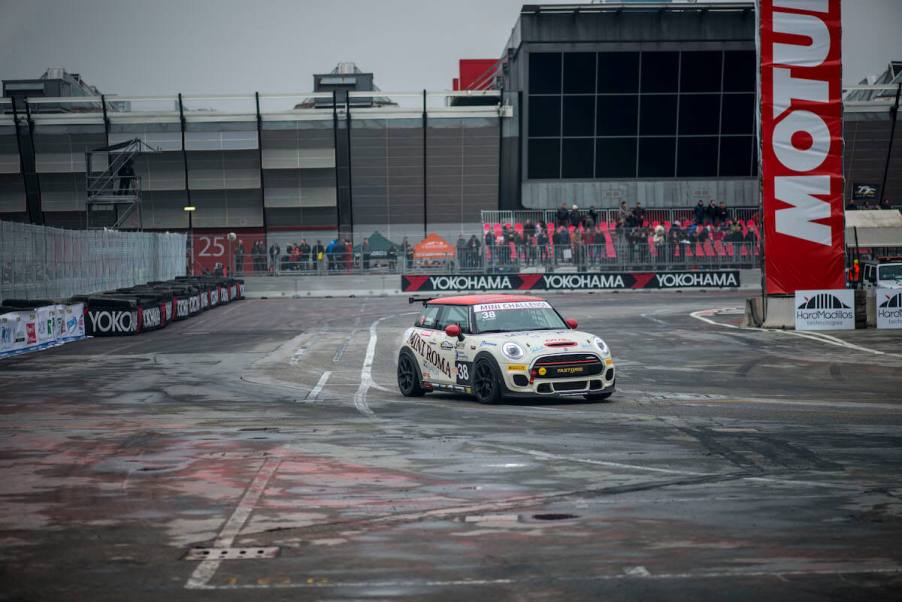
Is a Mini Cooper the Best Car for Autocross Racing?
The Mini Cooper has always been heralded as one of the most fun cars you can drive. Its diminutive size, spry handling, and turbocharged power make it feel like a large go-kart on the road. But what about on a sanctioned autocross course? Is the Mini Cooper the best car for killing some cones?
Which Mini Cooper models are best for autocross racing?

If you’re looking to get on an autocross track and are partial to Mini Coopers, some model years could be better than others. Consumer Reports noted that the 2002 to 2012 Mini Cooper models have the lowest predicted reliability scores. The editors at Vehicle History indirectly fortified those ratings by suggesting the 2013 and later model years.
According to the publication, the first-generation models (2002-2006) “are far from perfect due to their subpar track record of reliability and quality.” The first-gen Coopers were subject to clutch failures, cracked radiator expansion tanks, crankcase oil leaks, and electrical issues. None of which you would want if you’re planning to run the car hard at an autocross track.
The second-generation Mini Coopers had their share of issues as well. Some of the most notable ones included loose timing chains, oil starvation, and leaking fluids. All of those issues may not be good for taking a car on the track.
In that case, the third-generation Mini Coopers (2014-present) are better suited for racing as you’re less likely to have issues. Mini ironed out a lot of kinks from the previous generations. However, they are not without their issues. Some issues include bad mounts, turbos, and oil starvation, but the newer Coopers are better overall.
What does the third-generation Mini Cooper have?

Now that we have discovered that the third-gen Mini Cooper could be the best for autocross racing, it’s a good idea to look at what it has. Aside from having fewer issues, this iteration of the Mini Cooper houses a turbocharged 1.5-liter, three-cylinder engine under its hood that puts out 134 hp in its base form.
The more powerful Cooper S came equipped with a more-potent 189-hp turbocharged 2.0-liter engine that gets the car moving nicely. As for the Cooper’s transmission configurations, a six-speed manual transmission is standard, but a dual-clutch seven-speed transmission is available.
We suggest using either transmission for sweeping through an autocross course since you mainly only use second and third gear to spin around the cones. However, we expect that the manual transmission will make the car a lot more fun during daily driving duties.
The Mini Cooper is an excellent car for autocross racing

If you can’t afford a newer Mini Cooper, we suggest buying an old one but having it checked thoroughly and addressing any issues before getting it onto the track. Otherwise, 2014 models sell for around $14,000, which isn’t bad considering they retailed for over $30,000 when new. For that money, you’ll get a small front-drive hatchback that’s fun to drive on the street and on the autocross course.





